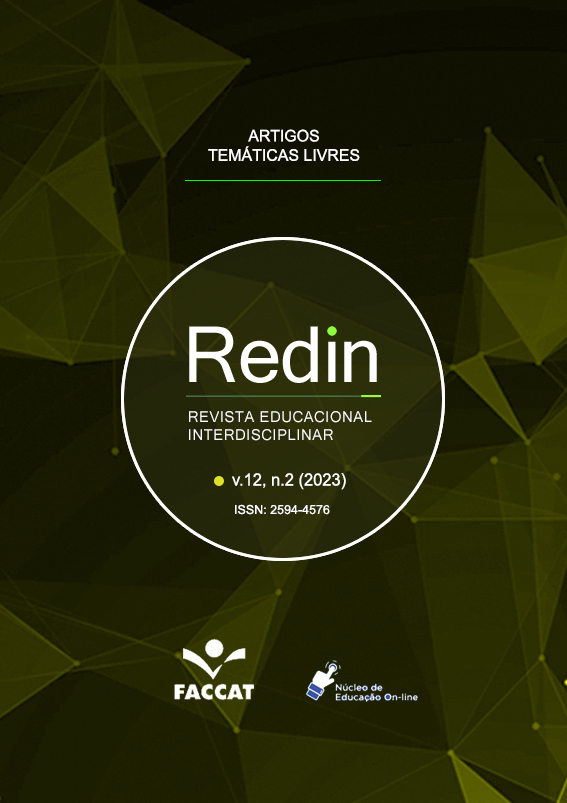Multimedia resources in education from the perspective of Richard Mayer's cognitive theory of learning
Abstract
This article presents the Cognitive Theory of Multimedia Learning (TCAM) proposed by Richard Mayer and its application to guide the production or selection of multimedia resources by teachers in their pedagogical practices. Quantitative research was carried out with 98 teachers from public and private schools, who work at different levels of education, to identify the criteria used to select or produce educational multimedia, tools used for development, and the main difficulties listed in this process. The results indicated that most teachers use multimedia resources in their classes and that they consider these resources important for the teaching and learning process, however, the production of educational multimedia is still incipient, predominantly involving the preparation of presentations with slides and videos. Many teachers face difficulties in the use and production of these resources and their integration with the content covered in the classroom. The article concludes that TCAM can be a useful approach to guide the production and use of multimedia resources in classes and that it is necessary to offer support and training to teachers so that they can make effective use of these resources.
Keywords: Educational Multimedia; Authoring Tools; Cognitive Theory of Multimedia Learning.
References
ABDULRAHAMAN, M. D., et al. Multimedia tools in the teaching and learning processes: A systematic review. Heliyon, v. 6, n. 11, p. e05312, 2020. https://doi.org/10.1016/j.heliyon.2020.e05312
CETIC - Comitê Gestor da Internet no Brasil. Pesquisa sobre o uso das tecnologias de informação e comunicação nas escolas brasileiras [livro eletrônico] : TIC Educação 2021: edição COVID-19 : metodologia adaptada, 2022. Disponível em: https://www.cetic.br/media/docs/publicacoes/2/20221121124124/tic_educacao_2021_livro_eletronico.pdf. Acesso em abril de 2023.
KLINGENBERG, S., et al. Facilitating learning in immersive virtual reality: Segmentation, summarizing, both or none? Journal of Computer Assisted Learning, v. 39, n. 1, pp. 218-230. 2023. https://doi.org/10.1111/jcal.12741
KOCH, I. Autoria de material digital: possibilidades de protagonismo na ação docente. In: Mídias na Educação: a pedagogia e a tecnologia subjacentes. MEC/CAPES/UAB. Editora Evangraf. Porto Alegre, 2017.
LI, J.; ANTONENKO, D; Wang, J. Trends and Issues in Multimedia Learning Research in 1996-2016: a Bibliometric Analysis. Educational Research Review, v. 28, 2019. https://doi.org/10.1016/j.edurev.2019.100282.
MAYER, R. Multimedia learning. New York: Cambridge University Press, 2021.
NEVES, R. F., CARNEIRO-LEÃO, A.M.; FERREIRA, H. S. A Imagem Da Célula Em Livros De Biologia: uma abordagem a partir da teoria cognitivista da aprendizagem multimídia. In: Investigações em Ensino de Ciências, 2016. https://doi.org/10.22600/1518-8795.ienci2016v21n1p94.
PAIVIO, A. Dual Coding Theory: Retrospect and Current Status. Canadian Journal of Psychology/Revue Canadienne de Psychologie, v.45, p. 255-287. 1991. https://doi.org/10.1037/h0084295
SANTOS, L. M. A.; TAROUCO, L. M. R. A. Importância do Estudo da Teoria da Carga Cognitiva em uma Educação Tecnológica. Revista Novas Tecnologias da Educação, v. 5, n. 1, 2007. https://doi.org/10.22456/1679-1916.14145
SWELLER, J. Cognitive Load Theory. Psychology of Learning and Motivation, p. 37–76, 2011. https://doi.org/10.1016/B978-0-12-387691-1.00002-8
TAROUCO, L. M. R.; ABREU, C. S. Mídias na Educação: a pedagogia e a tecnologia subjacentes. Editora Evangraf: Porto Alegre, 2017.


